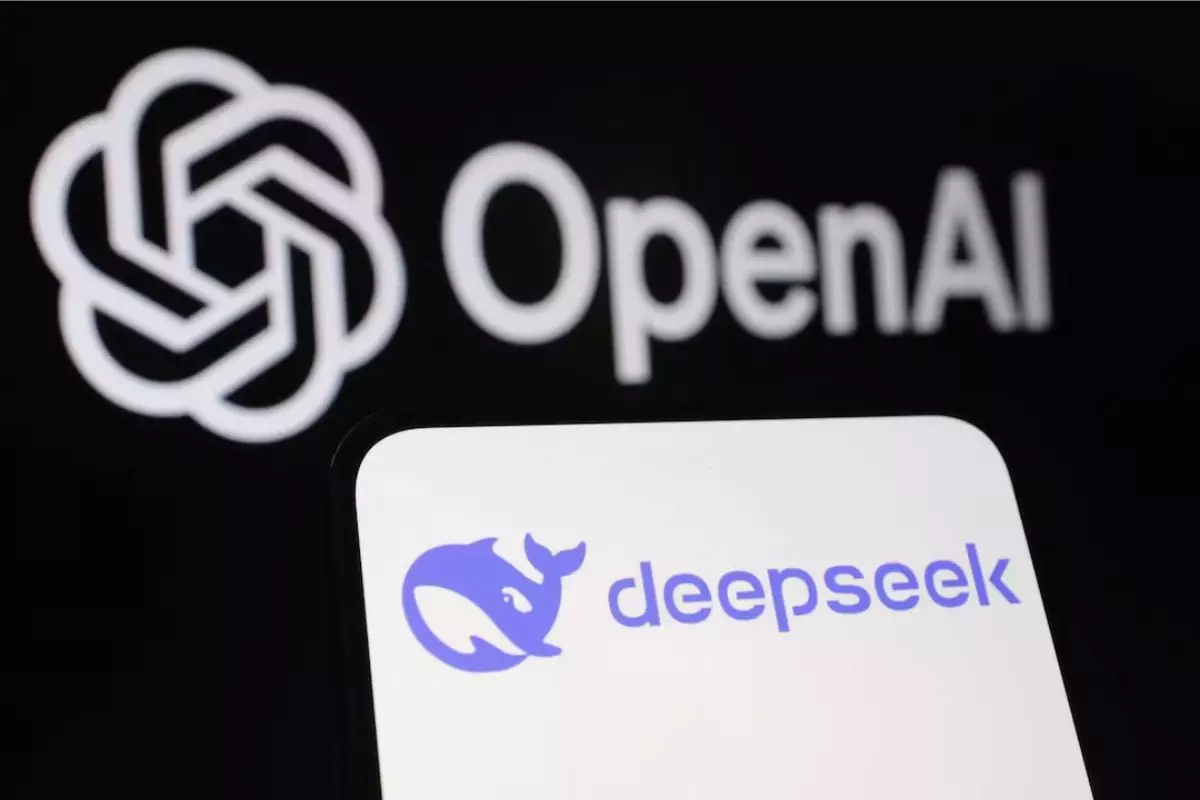The realm of artificial intelligence is ever-evolving, marked by fierce competition among industry leaders. OpenAI, known for developing the groundbreaking ChatGPT, has raised concerns regarding the ethical use of its proprietary technology. Recently, allegations emerged suggesting that DeepSeek, a Chinese AI firm, may have utilized OpenAI’s models to enhance its own R1 model. This claim, if substantiated, opens a Pandora’s box regarding intellectual property and competitiveness in the AI sector.
OpenAI’s assertions center around the principle of model distillation, a process wherein knowledge is transferred from an extensive, complex model to a smaller, more manageable version. The allegations claim that DeepSeek’s R1 model, which reportedly exceeds OpenAI’s o1 model in various benchmarks, might have been developed using data derived from OpenAI’s API. Such a technique, if done without permission, raises significant ethical questions. Notably, OpenAI’s GPT-4, with its considerable 1.8 trillion parameters, contrasts starkly with DeepSeek-R1’s 1.5 billion parameters, indicating a substantial imbalance in the foundational technology used.
Examining the Claim of Knowledge Transfer
The transfer of knowledge through model distillation typically occurs within a company’s own confines, utilizing datasets that they lawfully own. Companies like Meta have successfully implemented this approach when developing their Llama models, maintaining a clear boundary of legal and ethical usage. However, OpenAI’s suspicions suggest that DeepSeek may have breached these boundaries by manipulating prompt injections to generate outputs from OpenAI’s API illegally. If such actions are confirmed, it could highlight vulnerabilities in access control and protection of intellectual assets in the rapidly expanding AI market.
Following the allegations, OpenAI, in collaboration with Microsoft, has moved to restrict access to its services for the suspected users, indicating a proactive approach to safeguarding its technological innovations. Furthermore, OpenAI’s cooperation with the U.S. government signals the seriousness of the matter, emphasizing the need for stringent safeguards in the competitive landscape of AI. The implications of these actions extend beyond just OpenAI and DeepSeek, potentially reshaping how data sharing and partnerships are structured in the industry.
Despite the controversy, there’s a silver lining in the competitive tension sparked by such developments. OpenAI’s CEO, Sam Altman, has acknowledged the increasing competitiveness brought forth by DeepSeek, suggesting that this environment may ultimately lead to greater innovation. The rise of new players can spur existing companies to refine their technologies and broaden their offerings, benefiting consumers. However, it also underscores the crucial need for ethical considerations and respect for intellectual property in the face of rapid advancement.
The unfolding drama between OpenAI and DeepSeek encapsulates the challenges facing the AI community as technological advancements race ahead. As allegations of model distillation and misuse circulate, addressing these concerns will be vital. The future of AI hinges on a balanced approach that honors intellectual property while fostering competition and innovation. As this story continues to unfold, the vigilance of industry leaders, governments, and consumers will play an essential role in shaping the AI landscape.

